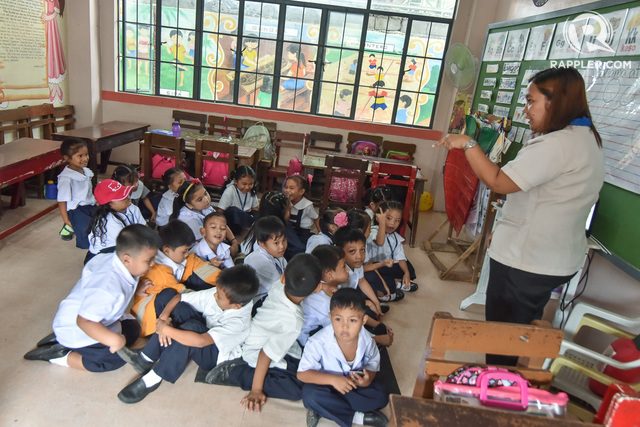SUMMARY
This is AI generated summarization, which may have errors. For context, always refer to the full article.

MANILA, Philippines – The state of the education sector in the Philippines remained problematic, the latest data of the Philippine Statistics Authority (PSA) showed on Wednesday, November 14.
The agency revealed for the first time its Multidimensional Poverty Index (MPI), which captures deprivations on various dimensions.
It showed that the education dimension had the largest share to the overall deprivation at 36.5% and 36.9% in 2016 and 2017, respectively.
Moreover, the study said that 6 out of 10 families in 2016, and 5 out of 10 families in 2017, were deprived of basic education. (FAST FACTS: What you need to know about the PH education system)
It also showed that 6 out of 10 families had at least one family member aged 18 years old and above who did not complete basic education in 2016. In 2017, the figure was at 5 out of 10.
Meanwhile, the health and nutrition dimension ranked 2nd, contributing 26.2% to the deprivation in 2016 and 27.5% in 2017.
The share of housing, water, and sanitation to the MPI was 26.4% in 2016 and 27.4% in 2017.
The employment dimension had the least share to MPI.
The Multidimensional Poverty Index
This is the first time the PSA released the MPI. The index takes into account 13 indicators, which are clustered under 4 dimensions:
Education dimension
- School attendance
- Educational attainment
Health and nutrition dimension
- Hunger
- Food consumption
- Health insurance
Housing, water and sanitation dimension
- Ownership of assets
- Toilet facility
- Source of water supply
- Tenure status of dwelling
- Housing materials
- Electricity
Employment dimension
- Underemployment
- Working children not in school
The index uses the merged dataset of the 2016 and 2017 Annual Poverty Indicators Survey (APIS) and Labor Force Survey (LFS) conducted by PSA.
The merged datasets have 5,324 families for 2016 and 4,202 for 2017.
A Filipino is identified as multidimensionally deprived if he or she is deprived in at least 4 of the 13 indicators.
In 2017, the multidimensionally-deprived Filipinos were estimated at 17.3%. In 2016, they were at 23.9%.
In terms of the intensity of their deprivation, on average, they were multidimensionally-deprived in 41.2% and 43.2% of the indicators in 2017 and 2016, respectively. – Rappler.com
Add a comment
How does this make you feel?
There are no comments yet. Add your comment to start the conversation.